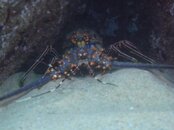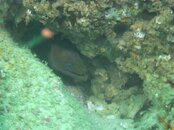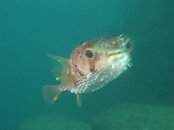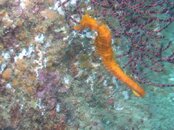Hi Everyone,
I am shooting with a Sea & Sea DX-2G with 2 YS-110a strobes. I have just recently bought the 2nd strobe and started shooting in manual (mostly TTL mode). I recently went on a trip to Cabo San Lucas where the water was cold, dark (~30 feet vis), and fairly heavy surge. I suspect my pictures were not sharp b/c I was moving the camera too much and my shutter speed was too slow but when I tried to change aperture down to allow faster shutter speed it did not fix the problem. Perhaps I should have also bumped iso up to allow even fast shutter speeds?
Anyway what are some tips for increasing sharpness - particularly in poor visibility or bad condition? Any suggestions for ideal ISO, aperture, or shutter speed to achieve best sharpness would be very helpful.
Thanks!
I am shooting with a Sea & Sea DX-2G with 2 YS-110a strobes. I have just recently bought the 2nd strobe and started shooting in manual (mostly TTL mode). I recently went on a trip to Cabo San Lucas where the water was cold, dark (~30 feet vis), and fairly heavy surge. I suspect my pictures were not sharp b/c I was moving the camera too much and my shutter speed was too slow but when I tried to change aperture down to allow faster shutter speed it did not fix the problem. Perhaps I should have also bumped iso up to allow even fast shutter speeds?
Anyway what are some tips for increasing sharpness - particularly in poor visibility or bad condition? Any suggestions for ideal ISO, aperture, or shutter speed to achieve best sharpness would be very helpful.
Thanks!








